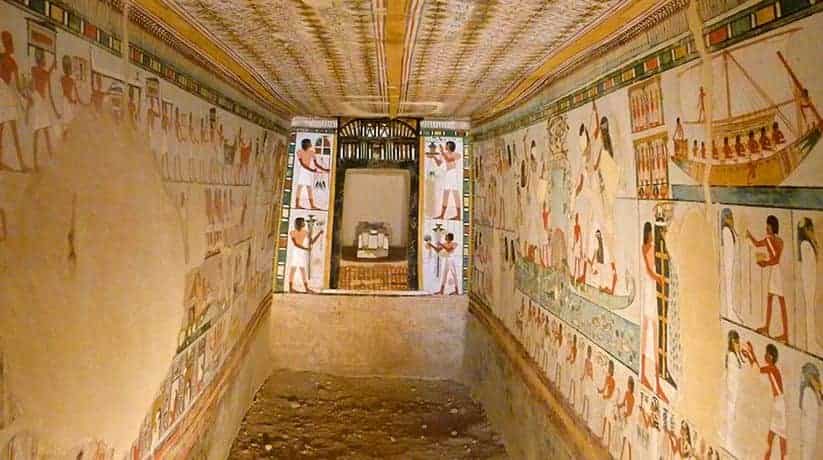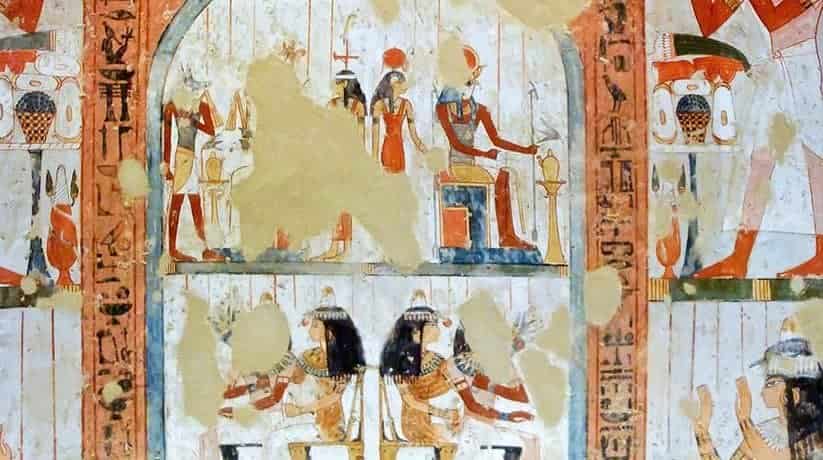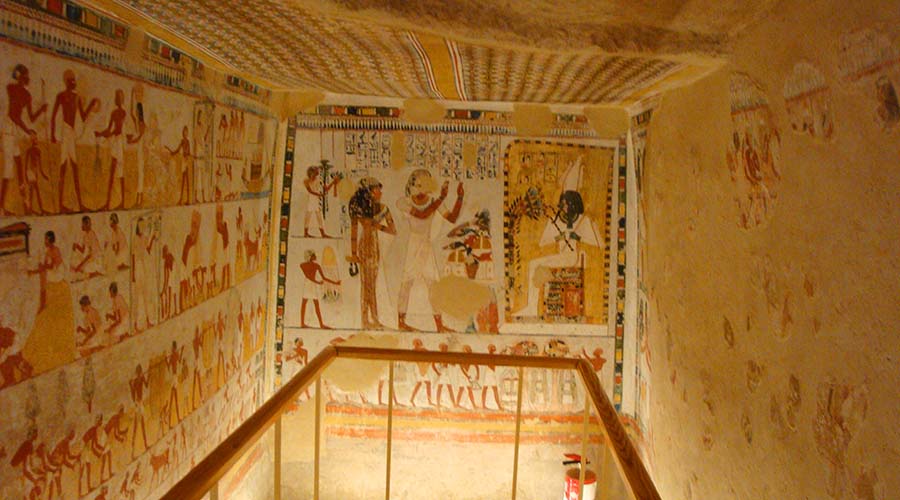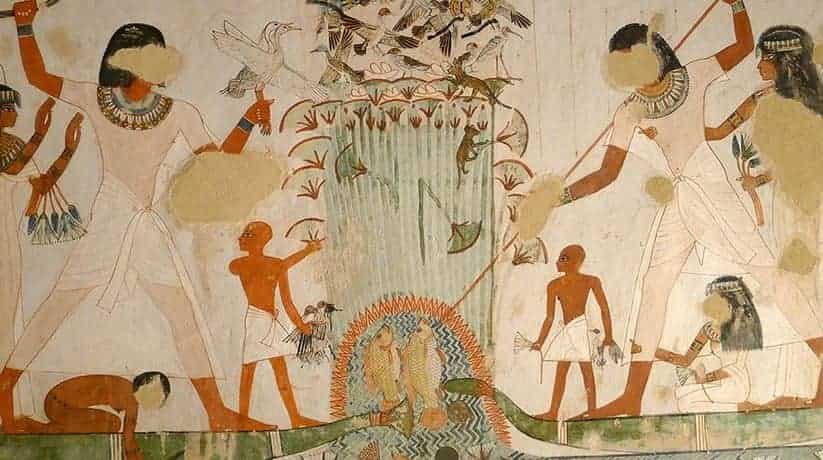Menna tomb Luxor Egypt TT 69 tours, prices, booking, reviews
Menna tomb Luxor Egypt found in the upper enclosure at Sheikh Abd el-Qurna, to the west of Nakht tomb (TT 52). In fact, the tomb is well-known for its superb wall paintings of scenes of daily life. The scenes depicted in bright colors. The classical private tombs on the West Bank at Luxor referred to as T-shaped. It particularly those located on the slopes of Sheikh Abd el-Qurna. The tomb is in the area which known as the Tombs of the Nobles. In fact, the tomb Luxor has an entrance corridor or a courtyard. Moreover, it leads into a wide vestibule, with another short corridor that leads into a long chapel. It is also with a small niche at its rear. Furthermore, Menna tomb Luxor (TT 69) is completely classic in this regard.
Menna held the title, “Scribe of the Fields of the Lord of the Two Lands of Upper and Lower Egypt”. It was besides to field overseer of Amun. These were not two separate positions. Moreover, he supervised temple owned agricultural lands which were dependencies of state granaries. Moreover, he thought to have worked for the Temple of Amun at Karnak. He also supervised the measuring of fields and inspected the work on the land. Moreover, he also prosecuted defaulters and recorded the crop yield. In fact, he lived during the 18th Dynasty. He worked under both Thutmose IV and Amenhotep III.
Further details about Menna tomb Luxor Egypt:
Menna tomb Luxor indeed has details that Egyptologists can gleam from subtle differences in the artwork. In fact, Private tombs often reflect the style imprinted by the current pharaoh. For example, Thutmose IV favored lean female figures in artwork. Amenhotep III was more prone to voluptuous curves. Thutmose IV preferred almond shaped eyes with round pupils that touch the lower lid. Amenhotep III’s females had closed, slanted and almond shaped eyes. It is with pupils that touch almost half of the upper eyelid. Egyptologists are actually able to date tombs to various pharaohs from these differences. Menna’s wife, Henuttawy (Henut-taui), maybe also was literate. In fact, we find a scribal palette depicted under her chair in several tomb scenes.
Moreover, Menna and Henuttawy had several sons, one of which followed in his profession. They also had three daughters, including one, Amenemwaskhet. She was a lady-in-waiting in the court of the pharaoh. In fact, Menna tomb Luxor is often a favorite of tourists. It is because of the sophisticated paintings and the decorative program. Moreover, the tomb is one of the most complete in the Theban necropolis. Menna’s family is prominent in these decorations. Many of the scenes are touching. As might expected, agriculture also documented. When you enter the tomb and make a left turn in the vestibule, you will find four registers. They are with different stages of reaping and of the wheat harvest. These activities carried out under the supervision of scribes who record the yield.
More details about Menna tomb Luxor Egypt:
On the next shorter wall, we find a scene of Menna and Henuttawy before a table of offerings. They are worshiping the god, Osiris, who seated on a throne inside a chapel. Furthermore, on the rear left wall of the vestibule are also fragmentary scenes. They represent the deceased and his wife at the funeral banquet. On the right rear wall are scenes of the couple receiving offerings. It is along with a list of the ritual offerings. On the next wall (the western wall) of the vestibule is a painting of a stele divided into three registers. In the upper register, we find Re-Harakhty, along with the main gods of the funeral cult. The middle register is a double representation of Menna and Henuttawy. They seated, and in the lower register the couple shown in an act of worship.
The right front wall of the vestibule has various offering scenes. Entering the Chapel, on the long right wall we first find scenes of bearers of offerings. We will also find the funeral procession. It followed by the deceased judged by Osiris. At the back on the short wall is the niche for statues which of the deceased and his wife. Note the lack of a false door often found in other tombs. The right wall of the chapel is the most interesting within Menna tomb Luxor. The opening scenes of this wall depict a young daughter of Menna. She picks lotus flowers while. Another one carries lotus flowers and the birds that they have caught. The next scene is well known. It shows the natural bounty to found in the marshes among the papyrus and lotus plants. Swarming with life, we find flocks of birds intermingled with butterflies.
Further details about Menna tomb Luxor Egypt:
It is besides the nests with eggs. There is also a cat and rodent who appear to be after the bird’s eggs. The next scene much like one found in Nakht tomb (TT 52). This leads us to believe that the same artist worked in both tombs early in the reign of Amenhotep III. It is a double scene, showing Menna standing on a papyrus fishing boat. His wife and sons are also present. On the right, Menna shown harpooning two fish. On the left, he shown with a throwing stick used for hunting birds. The final scene is in several registers. The top register depicts a pilgrimage to Abydos with a fleet of boats returning to Thebes. In the lower registers we find scenes. They dedicated to the rites carried out before the mummy. It is with the “Opening of the Mouth” ceremony being prominent.
Entrance to the tomb:
Opening times are 8 am to 4 pm. Tickets for Menna tomb Luxor and Nakht tomb cost 60 Egyptian pound. They bought from the ticket office.
















